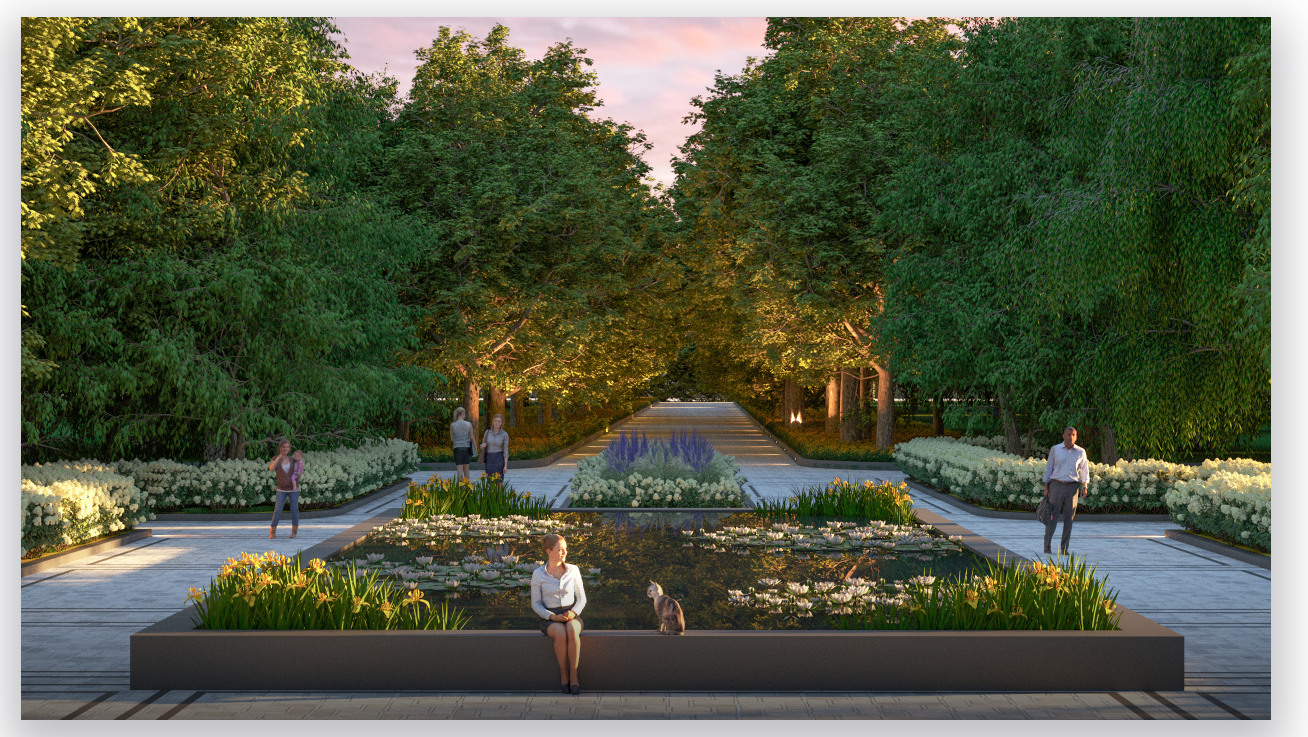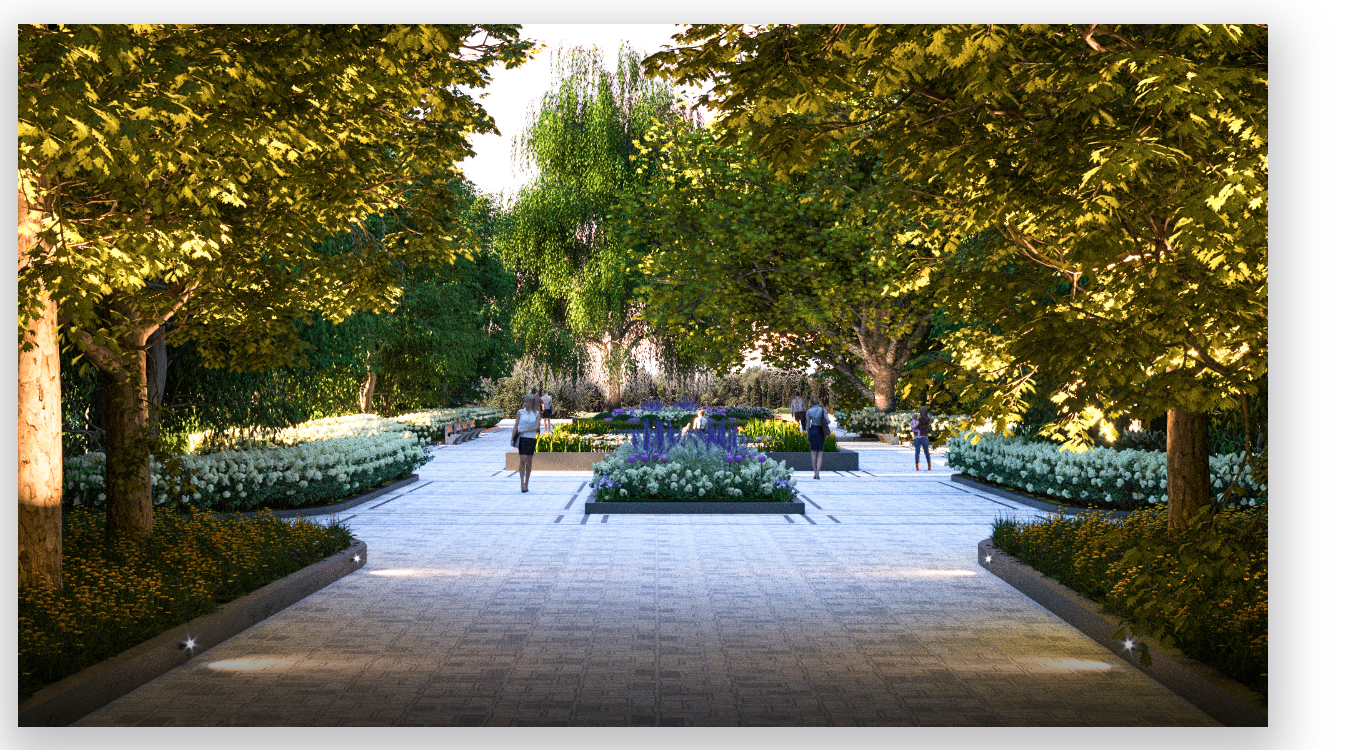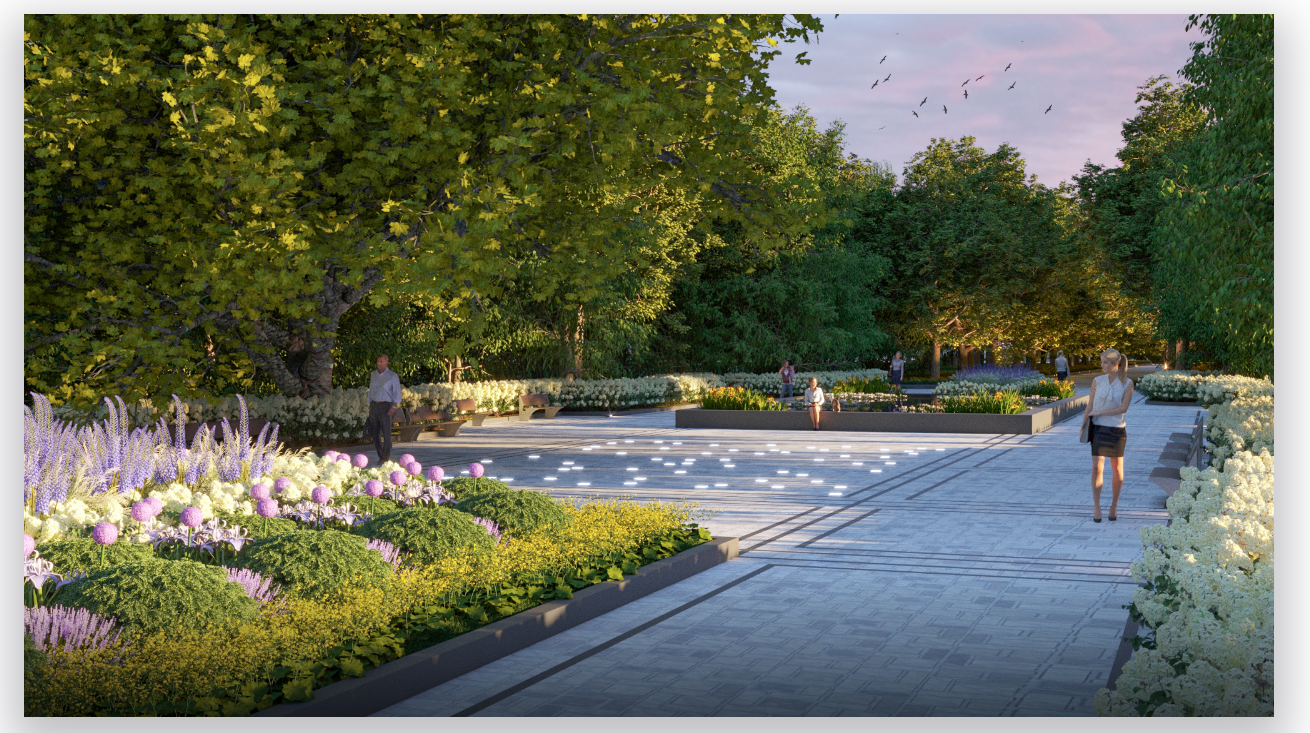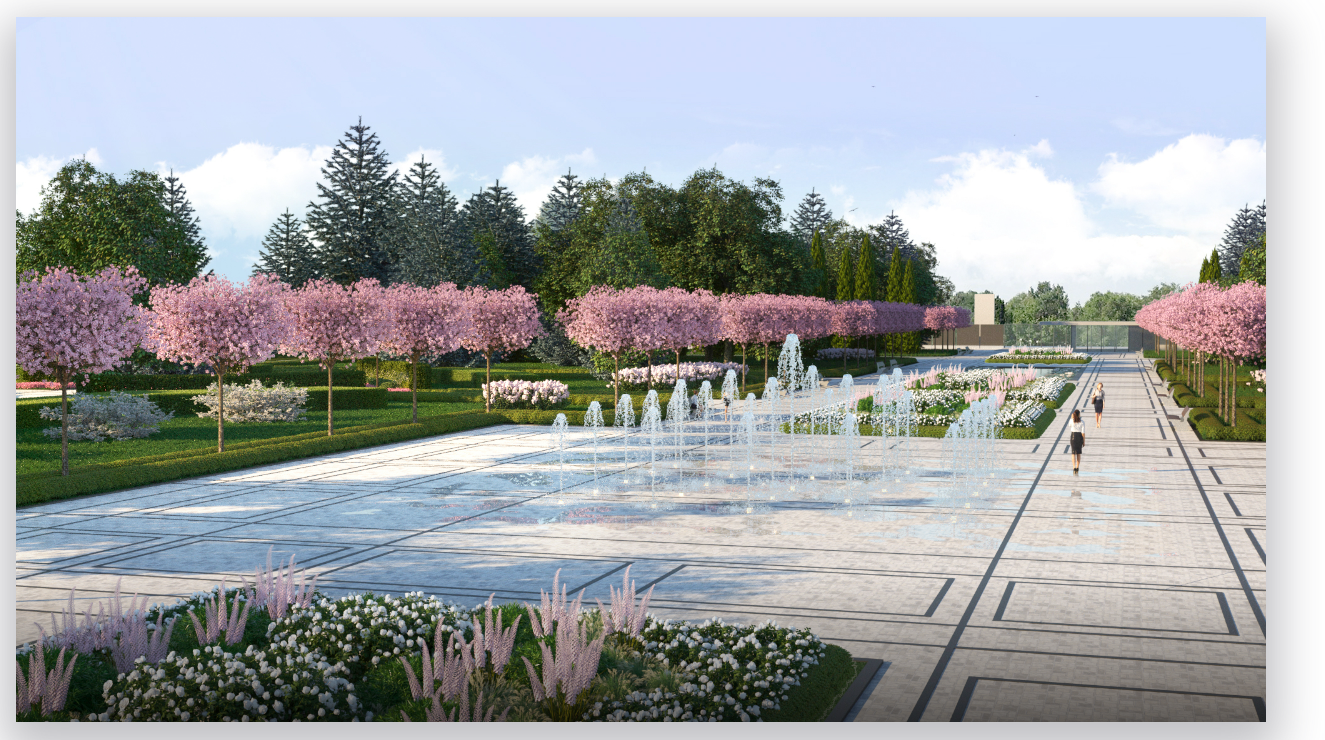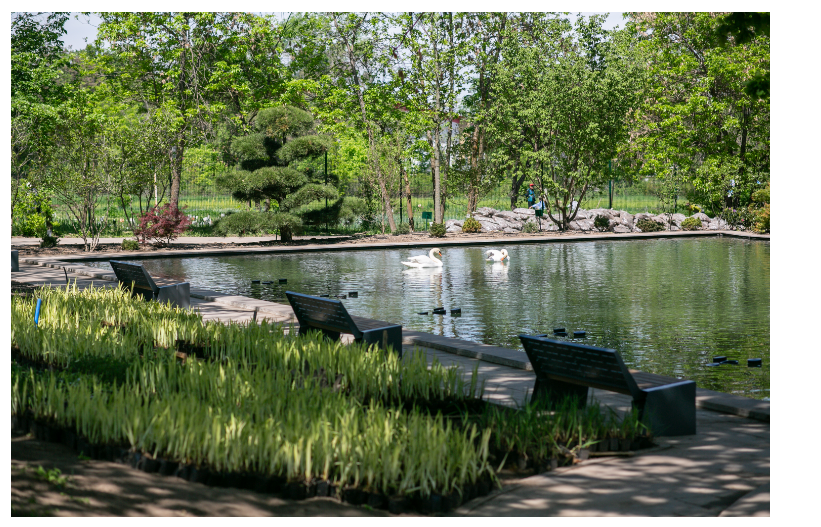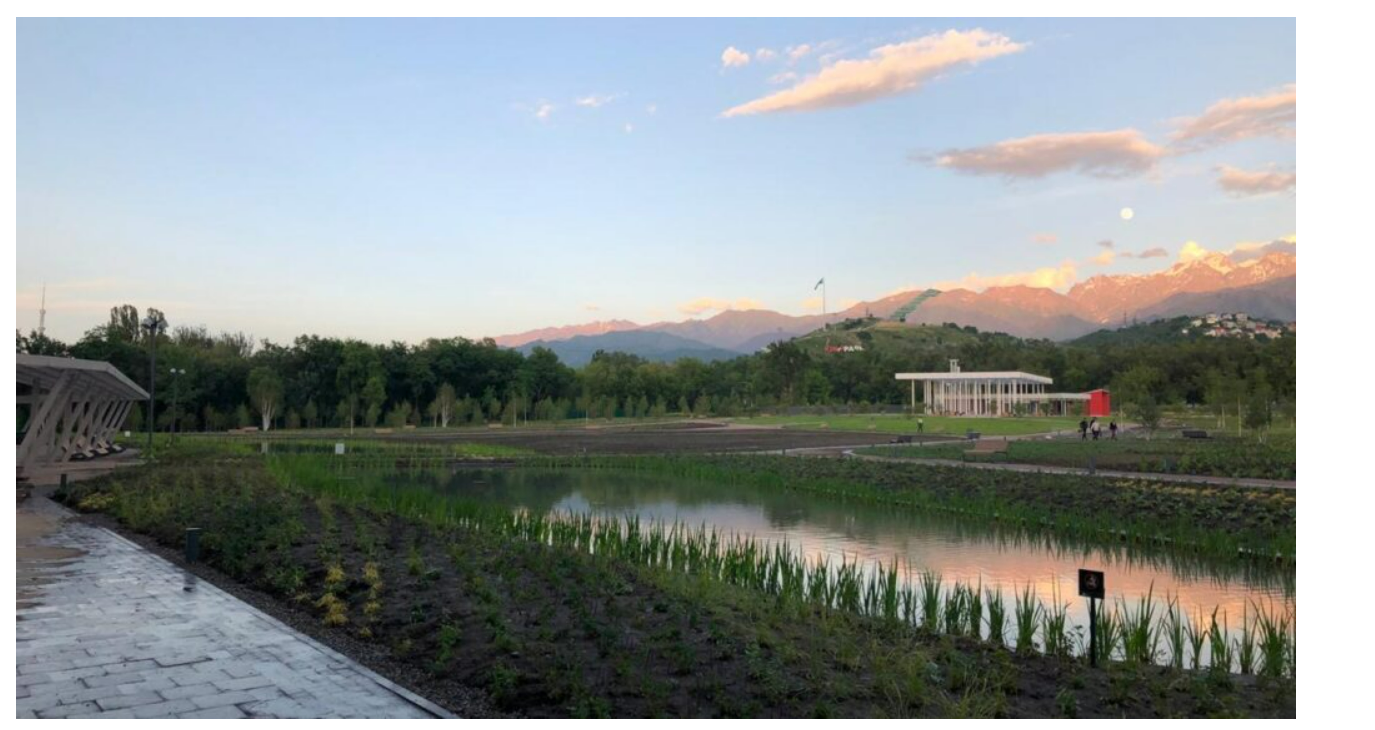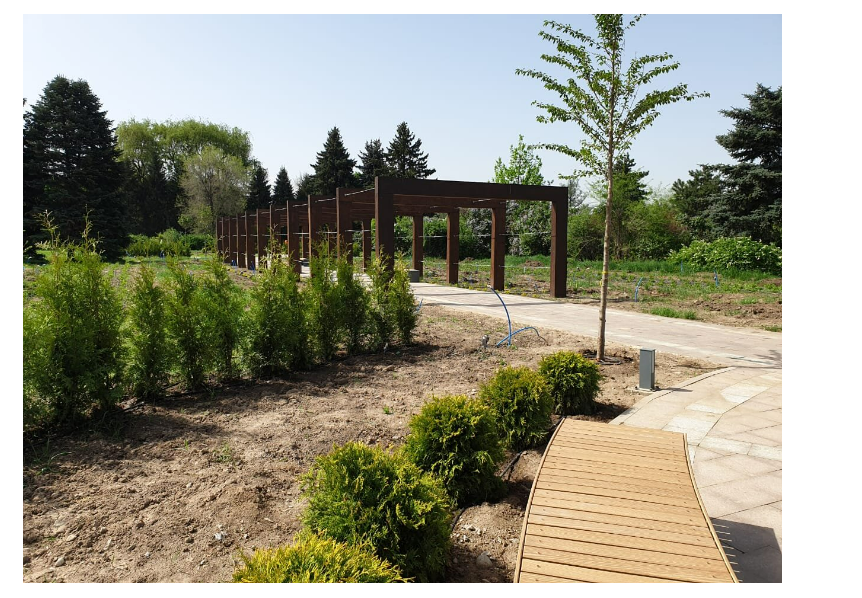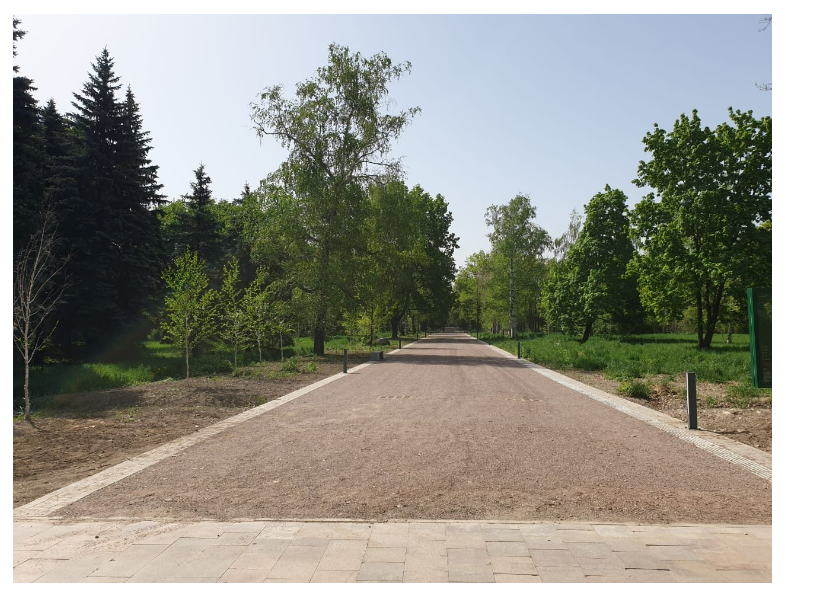In 2018, the Bulat Utemuratov’s Foundation began reconstruction works at the main Botanical Garden in Almaty at the request of the Institute of Botany and Phytointroduction and with the support of the governor of Almaty city [1, 5, 6]. The goal of the project was the restoration of the botanic garden with preservation of its original green character and the modernization of its infrastructure [2, 5]. Taking into account the special status of the Botanical Garden and the high public interest in the reconstruction project, the Foundation ensured full transparency to the public. Taking public recommendations into considerations, the schematic design of the reconstruction was approved in the autumn of 2018 [6]. The project also aimed to do no harm to the existing flora and fauna of botanical gardens, and apply new technology to provide long service life to the garden [1, 4]. To achieve the project's goals, the water supply system was restored, drip and auto irrigation systems were created. Around 174.3 thousand plants were planted, including more than 1300 trees. Additionally, 50 thousand sq.m of roads and paths were repaired, lighting systems and video surveillance systems were installed, and the garden furniture was renovated [1]. The project also resulted in the development of three new entrance pavilions with an electronic ticketing system. A mobile application with a garden map and a description of the green areas has been developed [5]. Special attention was paid to the accessibility of all zones of the Botanical Garden for low-mobility groups. [1, 4, 5, 6]. Confirming the success of the project, within three months after the reconstruction was completed, over 210 thousand persons visited the Almaty Botanic Garden [6].
Overview
Nature-based solution
- Blue infrastructure
- Lakes/ponds
- Parks and urban forests
- Botanical gardens
Key challenges
- Green space, habitats and biodiversity (SDG 15)
- Habitat and biodiversity conservation
- Green space creation and/or management
- Water management (SDG 6)
- Improvements to water quality
- Health and well-being (SDG 3)
- Creation of opportunities for recreation
- Inclusive and effective governance (SDG 16)
- Effective management
- Social justice, cohesion and equity (SDG 10)
- Environmental education
Focus
Project objectives
Implementation activities
Biodiversity conservation or restoration-focused activities
Biodiversity conservation:
- Protect and enhance urban habitats
- Preserve and strengthen existing habitats and ecosystems
- Protect species
- Undertake specific measures to protect species
- Undertake specific measures to protect native species
- Means for conservation governance
- Public engagement
- Create and use scientific knowledge for conservation
Main beneficiaries
- Researchers/University
- Citizens or community groups
Governance
Management set-up
- Co-governance with government and non-government actors
Type of initiating organisation
- Non-government organisation/civil society
Participatory approaches/ community involvement
- Consultation (e.g. workshop, surveys, community meetings, town halls)
- Citizen oversight (e.g. boards, advisory)
Details on the roles of the organisations involved in the project
Project implemented in response to ...
Financing
Total cost
Source(s) of funding
- Private Foundation/Trust
Type of funding
- Direct funding (grants, subsidies, or self-financed projects by private entities)
Non-financial contribution
- Provision of expertise
- Citizens (e.g. volunteering)
Impacts and Monitoring
Environmental impacts
- Water management and blue areas
- Enhanced protection and restoration of freshwater ecosystems
- Green space and habitat
- Increased green space area
- Reduced biodiversity loss
- Increased number of species present
- Enhanced support of pollination
Economic impacts
- Unknown
Socio-cultural impacts
- Social justice and cohesion
- Fair distribution of social, environmental and economic benefits of the NBS project
- Improved access to urban green space
- Increased visibility and opportunity for marginalised groups or indigenous peoples
- Health and wellbeing
- Gain in activities for recreation and exercise
- Education
- Increased support for education and scientific research
- Increased knowledge of locals about local nature
- Safety
- Increased perception of safety
Type of reported impacts
Presence of formal monitoring system
Presence of indicators used in reporting
Presence of monitoring/ evaluation reports
Availability of a web-based monitoring tool
References
2. Bulat Utemuratov Foundation. (2019). Main Botanic Garden of Almaty Will Be Closed for 4 Months. Available at: Source link (Accessed: February 27, 2023)
3. Bulat Utemuratov Foundation. (2019). Director of the Foundation Told about Botanic Garden Reconstruction Stages. Available at: Source link (Accessed: February 27, 2023)
4. Bulat Utemuratov Foundation. (2020). The Bulat Utemuratov's Foundation summarized the results of the Almaty Botanic Garden Reconstruction Project. Available at: Source link (Accessed: February 27, 2023)
5. Bulat Utemuratov Foundation. (2020). Almaty Botanical Garden Reconstruction is within Reach of Completion. Available at: Source link (Accessed: February 27, 2023)
6. Bulat Utemuratov. (2020). Botanical Garden of Almaty: How the park reconstruction of 15 million dollars looks like. Available at: Source link (Accessed: February 27, 2023)
7. The Main Botanical Garden, About the institute, available at Source link (accessed 10-04-2023)

